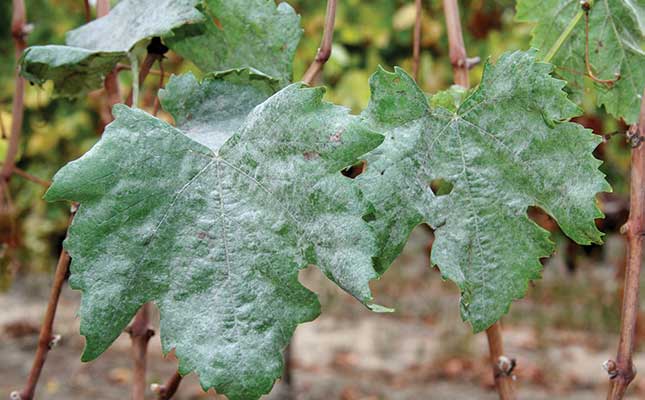Over the 2021/22 season, wet spring and summer conditions resulted in an explosion of powdery mildew infestations on wine grape farms in various regions in the Western and Southern Cape.
Not only did the fungal disease negatively affect yields, it also drove up production costs, as farmers were forced to use more fungicides than usual in an attempt to combat the disease.
In addition, before harvesting could take place, they also had to send workers into the vineyards to remove infected berries by hand, or risk them having an undesirable effect on wine quality.
De Wet du Toit, a crop protection specialist at Winfield United South Africa, told farmers at a Winetech Vinpro information day held in May in Rawsonville, Western Cape, that early action was key to the successful management of powdery mildew.
“Instead of waiting for signs of powdery mildew to appear before taking action, it’s better to follow a spraying programme from early on in the season to prevent the disease from spiralling out of control. You can’t destroy powdery mildew, so prevention is much cheaper and more effective than trying to eradicate the disease,” he explained.
The foe
While there is an absence of physical signs when plants first become infected with powdery mildew, farmers should know that poor management and high disease pressure in one season are an indication of more problems to come in the next.
Du Toit said the fungus overwintered in dormant buds, which released spores after bud break. These spores were carried on the wind to neighbouring vines, where they germinated to form new infections within five to 10 days. Once a vine had become infected, it took between seven and 28 days, depending on climatic conditions, for the characteristic white powdery stains to form on the leaves.
He added that powdery mildew usually developed at temperatures of between 20°C and 27°C (see Table 2), with relative humidity of more than 75%. The fungus could be destroyed when exposed to temperatures above 40°C for at least six hours. However, such temperatures were rare in vine canopies, especially those of vigorous growers with a lot of foliage.



